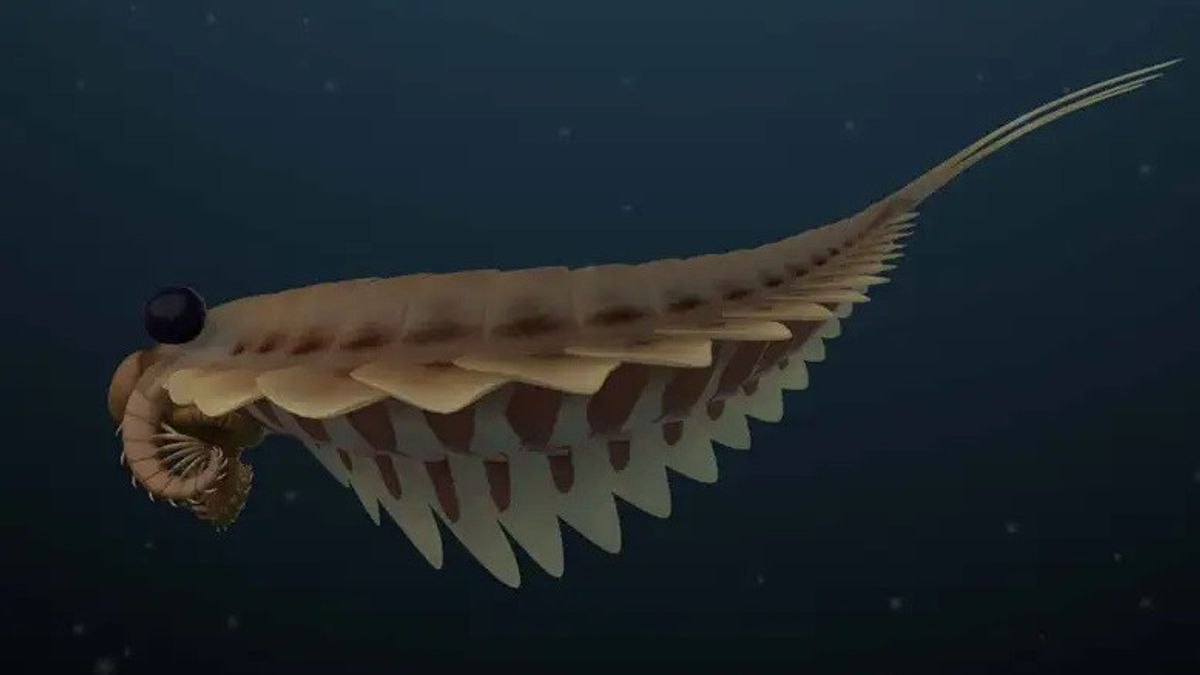JAKARTA - A three-eyed animal with wing-like fins once swam through shallow seas, using high visual perception to hunt smaller marine animals.
Stanleycaris hirpex lived in the Cambrian Period about 500 million years ago, not long after the first eye appeared in the fossil record. It is the first animal with three eyes known among the arthropods, a group that contains insects, arachnids and crustaceans. However, the researchers who described it think there may be others where the third eye has been overlooked.
S. hirpex is about the size of a human hand, has two protruding eyes with hundreds of lenses on each side of its head, plus a much larger third eye in the middle.
Living among finger-sized animals, it may use its sophisticated visual system to pursue fast-moving prey, said Joseph Moysiuk of the University of Toronto in Canada.
"It's kind of interesting that when we look at the evolution of the first predators, we also see the evolution of complex sensory systems where we have different eyes, perhaps performing different tasks for organisms."
Moysiuk and his colleagues recently investigated hundreds of very well-preserved S. hirpex fossils excavated from the Cambrian Burgess Shale in the Canadian Rockies of British Columbia.
Many of their 268 specimens even had soft tissue intact, including the brain, nerves, and reflective material in their visual system.
"When you split one of these rocks in the field, you can see their eyes shining, after 506 million years, in the sun. So it's been pretty clear since we first saw organisms that have three eyes," Moysiuk said.
The animals have 17 body segments, two pairs of stiff blades in the lower third of their bodies and spiked claws that may sweep prey right into their toothed jaws.
"This is a pretty vicious animal," he said.
Moysiuk thinks a large middle eye combined with two lateral eyes may have been a common form of early invertebrates, before developing into two or more paired eyes in later species.
VOIR éGALEMENT:
For example, the 520 million-year-old Lyrarapax, which belongs to the same group of early arthropods called radioodonts, had a similar structure on its forehead that might have been eyes.
The new findings add to the generally odd physical profile of radioodonts, Moysiuk said. Radiodons often have a pair of eyes protruding from the stalk and long, oddly shaped appendages.
The English, Chinese, Japanese, Arabic, and French versions are automatically generated by the AI. So there may still be inaccuracies in translating, please always see Indonesian as our main language. (system supported by DigitalSiber.id)













